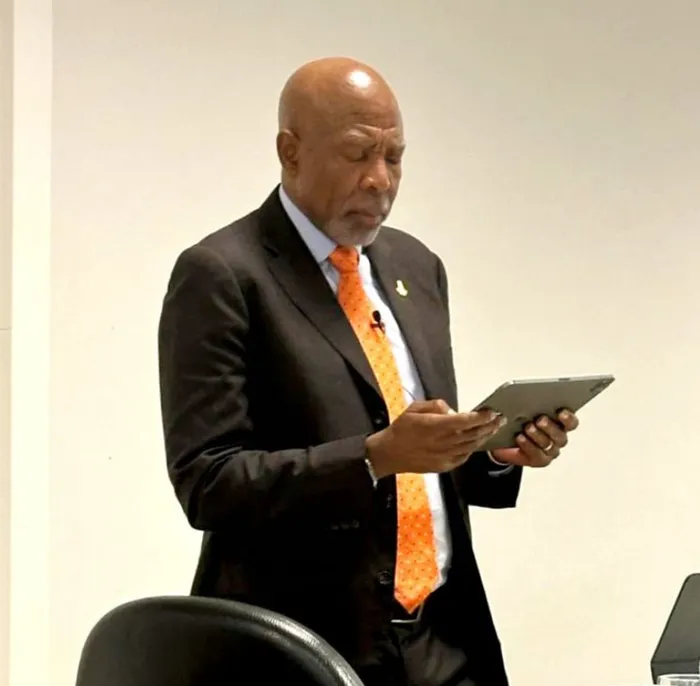Pushing inflation lower does not mean slower GDP growth, says Kganyago

SARB Governor Lesetja Kganyago delivering a guest lecture at the University of Stellenbosch yesterday. Picture: Supplied
Nicola Mawson
South African Reserve Bank (SARB) Governor Lesetja Kganyago yesterday challenged widely-held beliefs about the relationship between inflation, unemployment, and economic growth.
Delivering a special guest lecture at the University of Stellenbosch yesterday, Kganyago – who also has an honorary doctorate for his contributions to policy making from the University – argued that diminishing inflation rates did not necessarily equate to stagnant economic growth or climbing unemployment rates.
“We have an opportunity to achieve permanently lower inflation and therefore permanently lower interest rates. Executed effectively, a lower target could be achieved at little cost, just as we moved to 4.5% at little cost,” he said.
The Governor noted that the globe has recently experienced the biggest surge in inflation in a decade.
“People really hate inflation. We always knew inflation was bad, and we always knew the public didn’t like it,” Kganyago said.
However, he said, policy makers in developed countries were surprised at just how adversely people reacted to higher prices, adding that some felt it would have been better for there to be a recession than a lack of price stability.
“It is a strong reminder to central bankers that the public like price stability and dislike inflation,” he said.
One of the arguments put forward in 2021 as inflation started rising post the pandemic was that it would be transitory and did not require a monetary policy intervention, a theory that proved to be inaccurate, he said.
Kganyago said another failed claim was the 2022 argument that inflation would come down only through a severe recession, with a big increase in unemployment. He pointed out that the contrary happened.
“In fact, inflation in major economies, like the United States, fell from about 9% to just over 2%, with no recession and steady job growth,” he said.
Based on this, Kganyago said, “you could say that central bankers either got it right or they got lucky. My sense is that they made their own luck.”
Furthermore, within the context of administered prices—including water, petrol, and electricity—which comprise around 16% of the consumer price index, Kganyago reassured stakeholders that these components are not barriers to achieving lower inflation.
He drew a comparison to Chile, which maintains a 3% inflation target, suggesting South Africa's performance has underperformed with an average inflation rate higher by 1.8 percentage points.
“At 6% inflation, prices double in just over a decade and triple in two decades. No one could confuse that with price stability,” he emphasized.
Despite recognizing the relative improvement since the troubling double-digit inflation rates of the 1980s and 1990s, Kganyago advocated for a more rigorous inflation target.
Moreover, the Governor said that South Africa’s inflation was coming in at the upper end of the band, with this target set in 2000, too often.
“We would not treat 3-6% as a zone of indifference,” he articulated, stressing the need for political and market clarity.
In conclusion, Kganyago reiterated the importance of strong communication from central banks to craft realistic market expectations.
With current inflation situated at 4.4%, Kganyago was optimistic that the rate will hold firm at the targeted mid-point through the end of the year.
“Good monetary policy can deliver low inflation at a modest cost,” he opined, reinforcing the notion that proactive governance can stabilise economic conditions while promoting growth,” he said.
BUSINESS REPORT
Reserve Bank’s Monetary Policy Review: SA’s economy expanded by 1.1% in 2024
Could we get another interest rate cut in November? This is what Kganyago has to say
SARB governor insists interest rate decisions will focus on domestic factors amid global cuts
Reserve Bank’s monetary policy ‘a tool of neo-colonial influence’